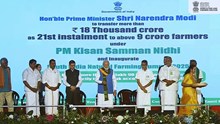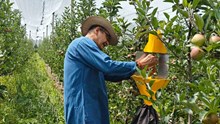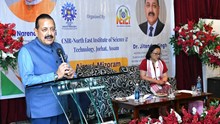
The e-NAM (National Agricultural Market) platform has expanded its reach by incorporating 10 new commodities along with their respective tradable parameters. With this addition, the total number of commodities available for trade on e-NAM has increased to 231. The initiative, led by the Department of Agriculture and Farmers’ Welfare, aims to widen the coverage of agricultural produce and create greater opportunities for farmers and traders to benefit from digital trading.
Responding to the growing demand from stakeholders, including farmers and traders, the Directorate of Marketing and Inspection (DMI) has formulated tradable parameters for these newly added commodities. The process involved extensive consultations with state agencies, subject matter experts, traders, and the Small Farmers’ Agribusiness Consortium (SFAC) before receiving approval from Union Minister of Agriculture and Farmers’ Welfare, Shivraj Singh Chouhan. These tradable parameters are designed to ensure quality assurance, enhance commercial viability, and ultimately help farmers secure better prices for their produce.
The newly introduced commodities include dried tulsi leaves, besan (chickpea flour), wheat flour, chana sattu (roasted chickpea flour), and water chestnut flour under the miscellaneous category. Asafoetida and dried fenugreek leaves have been added to the spices category, while water chestnut and baby corn are now part of the vegetable segment.
Additionally, dragon fruit has been included in the fruit category. Notably, items such as chana sattu, besan, wheat flour, and asafoetida fall under the secondary trade category, which is expected to support Farmer Producer Organizations (FPOs) in marketing value-added products and formalizing trade in these segments.
DMI continues to play a crucial role in defining trading parameters for agricultural commodities listed on e-NAM. These standardized specifications promote transparency, ensure fair trading practices, and contribute to the overall growth of the agricultural sector. With the latest expansion, the platform now accommodates a diverse range of commodities, further strengthening its role in digital agricultural trade.
The updated list of tradable commodities reinforces e-NAM’s commitment to enhancing market accessibility and pricing transparency for farmers. This initiative aligns with the government’s broader vision of modernizing the agricultural sector by promoting efficiency, inclusivity, and economic empowerment.
The newly approved parameters are now available on the e-NAM portal, facilitating seamless digital transactions and fostering a more structured agricultural trade ecosystem.
















